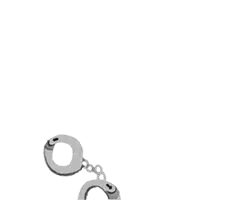Part 7Provisions relating to administration
Power to inspect land, premises, and places and stationary vehicles, aircraft, and ships
127Power to inspect land, premises, and places and stationary vehicles, aircraft, and ships
Subject to subsections (3) and (4), an inspector may—
- in the case of any land, premises, or place, at any reasonable time or times; and
- in the case of any vehicle, aircraft, or ship, at any reasonable time or times at which the vehicle, aircraft, or ship is stationary,—
A constable may, for the purpose of exercising the powers conferred by this section or of enabling an inspector to exercise any of the powers conferred by this section, stop any vehicle if the constable has reasonable grounds to believe that an animal on or in that vehicle is suffering or is likely to suffer unreasonable or unnecessary pain or distress.
No inspector may, under subsection (1), enter in or on any dwelling or marae unless he or she is authorised to do so by a search warrant issued under section 131.
In the case of a ship that is neither a ship registered under the Ship Registration Act 1992 nor a ship entitled under any provision of that Act (other than section 8(1)(b)) to be registered as a New Zealand ship, the power that an inspector has, under subsection (1), may be exercised only if the ship—
- is in a port, harbour, roadstead, or anchorage in New Zealand; or
- is otherwise within the internal waters of New Zealand as defined by section 4 of the Territorial Sea, Contiguous Zone, and Exclusive Economic Zone Act 1977.
If an inspector exercises a power of entry under subsection (1), the inspector may take any photographs, sound or video recordings, drawings, or other records (whether paper-based or electronic) of anything relevant to, and observed during, an inspection.
If an inspector exercises a power of entry under subsection (1), the inspector may take—
- the carcass of or tissue or other bodily samples (for example, blood samples) from any dead animal found during an inspection:
- tissue or other bodily samples (for example, blood samples) from any live animal found during the inspection.
Where an inspector who exercises a power of entry under subsection (1) has reasonable grounds to believe, in respect of any animal found on or in the land, premises, or place or in or on the vehicle, aircraft, or ship, that—
- the animal has been wilfully ill-treated contrary to section 28; or
- the owner of the animal is already disqualified from owning an animal under this Act; or
- the physical, health, and behavioural needs of the animal or the need for the animal to receive treatment from a veterinarian make it necessary or desirable to remove the animal from the land, premises, or place or the vehicle, aircraft, or ship; or
- the animal is at clear risk of imminent harm,—
The inspector may keep the animal at a place chosen by the inspector until—
- the animal is, under section 172, forfeited to the Crown or to an approved organisation; or
- a District Court Judge orders that the animal be delivered to the owner of the animal or to the person charged with the offence against this Act.
An inspector may take any person in or on any land, premises, or place or in or on an aircraft, ship, or vehicle to assist the inspector with an inspection under subsection (1).
Notes
- Section 127(2): amended, on , pursuant to section 116(a)(ii) of the Policing Act 2008 (2008 No 72).
- Section 127(4A): inserted, on , by section 48(1) of the Animal Welfare Amendment Act (No 2) 2015 (2015 No 49).
- Section 127(4B): inserted, on , by section 48(1) of the Animal Welfare Amendment Act (No 2) 2015 (2015 No 49).
- Section 127(5)(aa): inserted, on , by section 48(2) of the Animal Welfare Amendment Act (No 2) 2015 (2015 No 49).
- Section 127(5)(b): amended, on , by section 48(3) of the Animal Welfare Amendment Act (No 2) 2015 (2015 No 49).
- Section 127(5)(c): inserted, on , by section 48(4) of the Animal Welfare Amendment Act (No 2) 2015 (2015 No 49).


